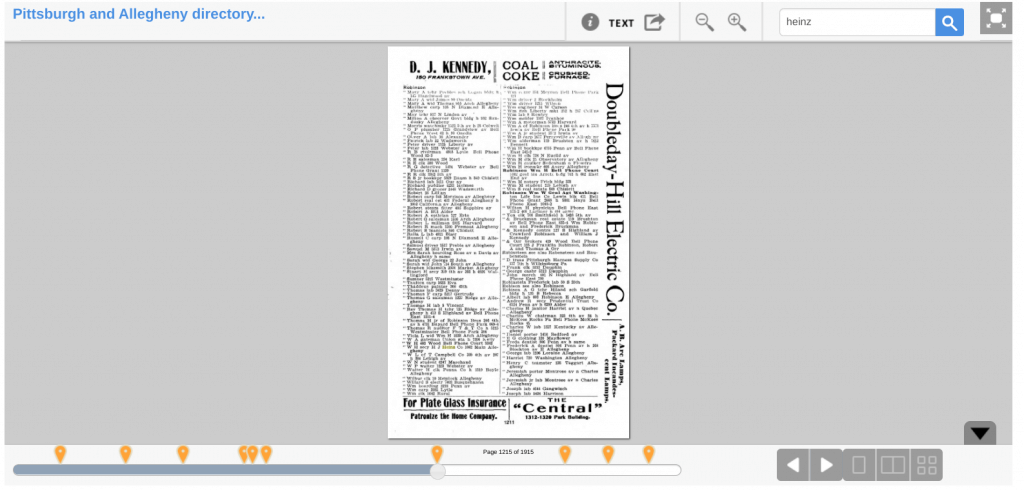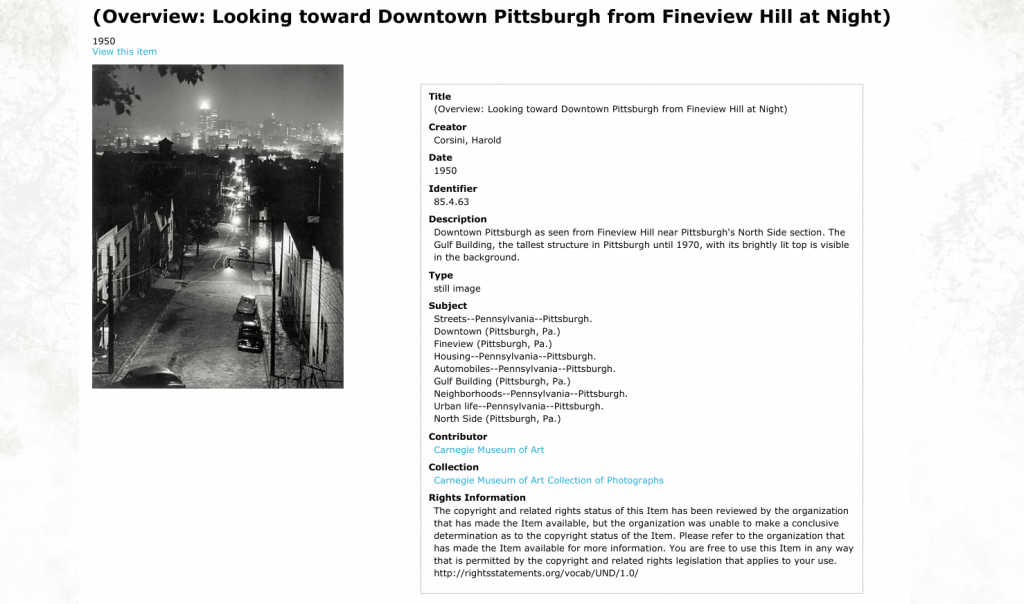One of my favorite non-CLP resources for doing historical research about the city is Historic Pittsburgh. Hosted by the University of Pittsburgh, this website hosts digitized content from more than a dozen libraries and archives around the city, so it’s a great one-stop-shopping experience for genealogy, house histories, archival research, and – my personal, preferred time-suck – historic photos!
With one search, you get information about collections from Pitt, CLP, the Detre Library & Archives at the Heinz History Center, Chatham University, the Carnegie Museums, and more. Content includes maps, city directories, finding aids (which describe archival collections), digitized books and newspapers, oral histories, and photos. And since all
Historic Pittsburgh is a gold mine for genealogists looking for Pittsburgh ancestors because the site hosts digitized copies of Pittsburgh city directories. City directories are, essentially, the predecessor to the phone book (remember those?), and they are supposed to list all of the city’s residents. The best thing about using the directories online? The books are set up to allow text searches. Just type in the name or word you’re looking for, and the viewer provides pins that can take you directly to where that word exists in the book.
In the image below, each of those orange pins shows where the word “Heinz” appeared in the 1902 Pittsburgh and Allegheny Directory.

Since the census was only taken every 10 years, but a directory was published every year, city directories are one way to track your ancestors’ movements between censuses. The exact information in each listing varies by year, but you’ll always see your ancestor’s address, and sometimes their spouse’s name and their occupation. The directories also have lists of businesses, schools, and churches. Names are organized alphabetically, and the business, church and school lists are often at the front of the directory (but check the table of contents to be sure).
You can find the city directories on Historic Pittsburgh’s home page under Highlights.
Another fun collection in that Highlights group is the Hopkins Maps. Those maps show every building in the city at the time the maps were published. These maps are a great way to start researching your house history because looking at the map of your street over time can help you figure out when your house was built. The image below, from the 1882 Atlas of the Cities of Pittsburgh and Allegheny shows a section of the North Side. The pink shapes represent stone or brick buildings, while the yellow designates wood-frame structures.

I love these maps because they show the outlines of the buildings, the old street names, and where businesses were located. The image above shows where Rivers Casino stands today on the North Side. Using maps as part of your genealogy research can help you understand the landscape where your ancestors lived – what kind of house they lived in, what businesses were near them, and how that neighborhood changed over time.
OK, I’ve saved the best for last – the massive photo collection! You can find photos in a couple of different ways. If you go to the Collections page, each individual collection is listed by title and provides a short description of what the collection holds. Alternatively, you can use the main search bar at the top of the page and type in a few key words for what you’re hoping to find. When I type in “Oakland,” and wait patiently as the system searches the collection, I get back over 5,000 results with everything that mentions Oakland. Narrowing that down to photos is actually pretty easy, though – just look down the left-hand side of the page and click Images from the “Type of Object” list. Once that’s sorted, you can click on each thumbnail image to view a larger version and learn more about it.

I hope you’ll spend some time on Historic Pittsburgh if you’re doing any sort of historical research. This barely scratches the surface of what’s available – I didn’t even talk about the archival collections or digitized books — on this great always-available resource!

